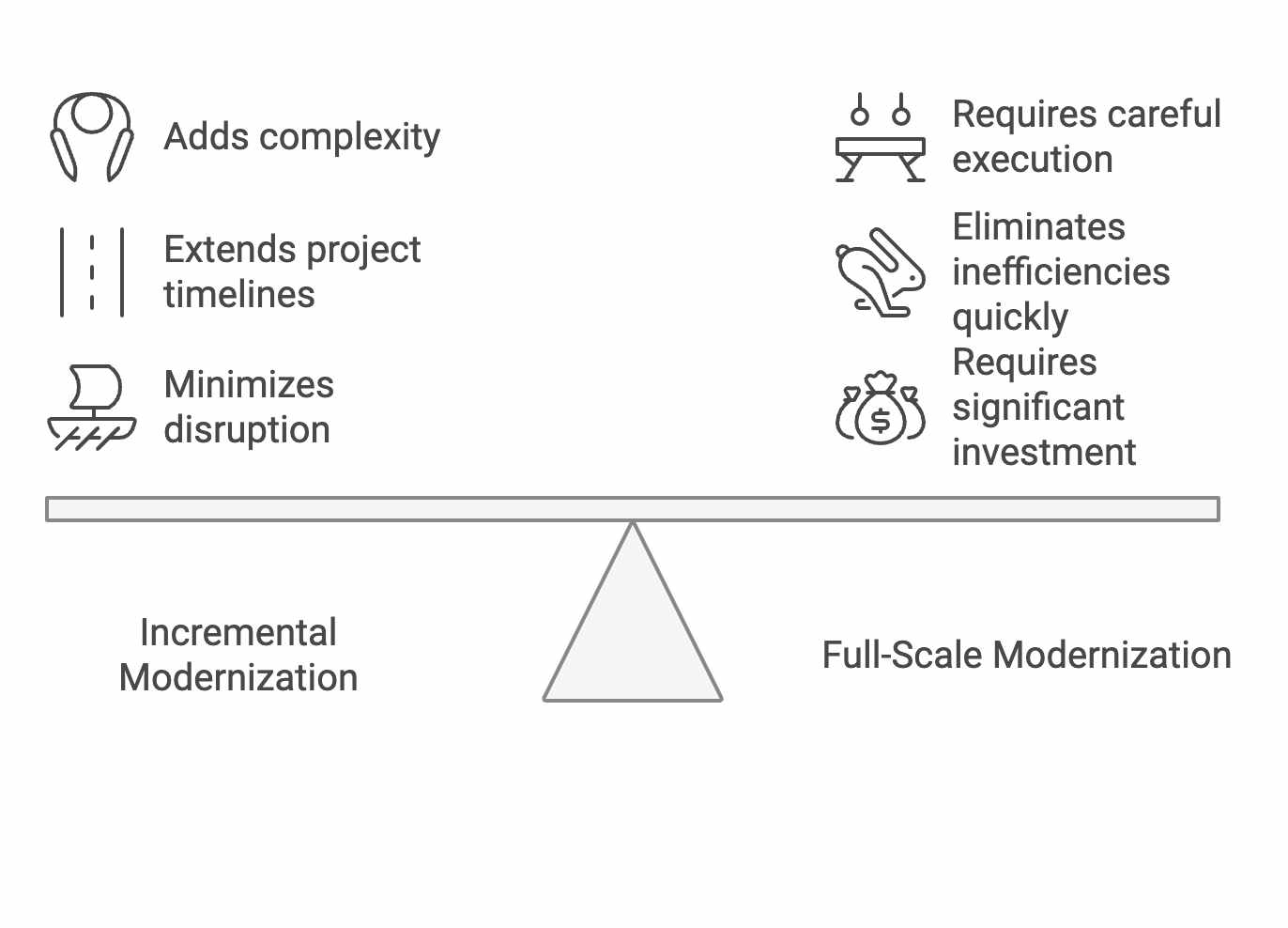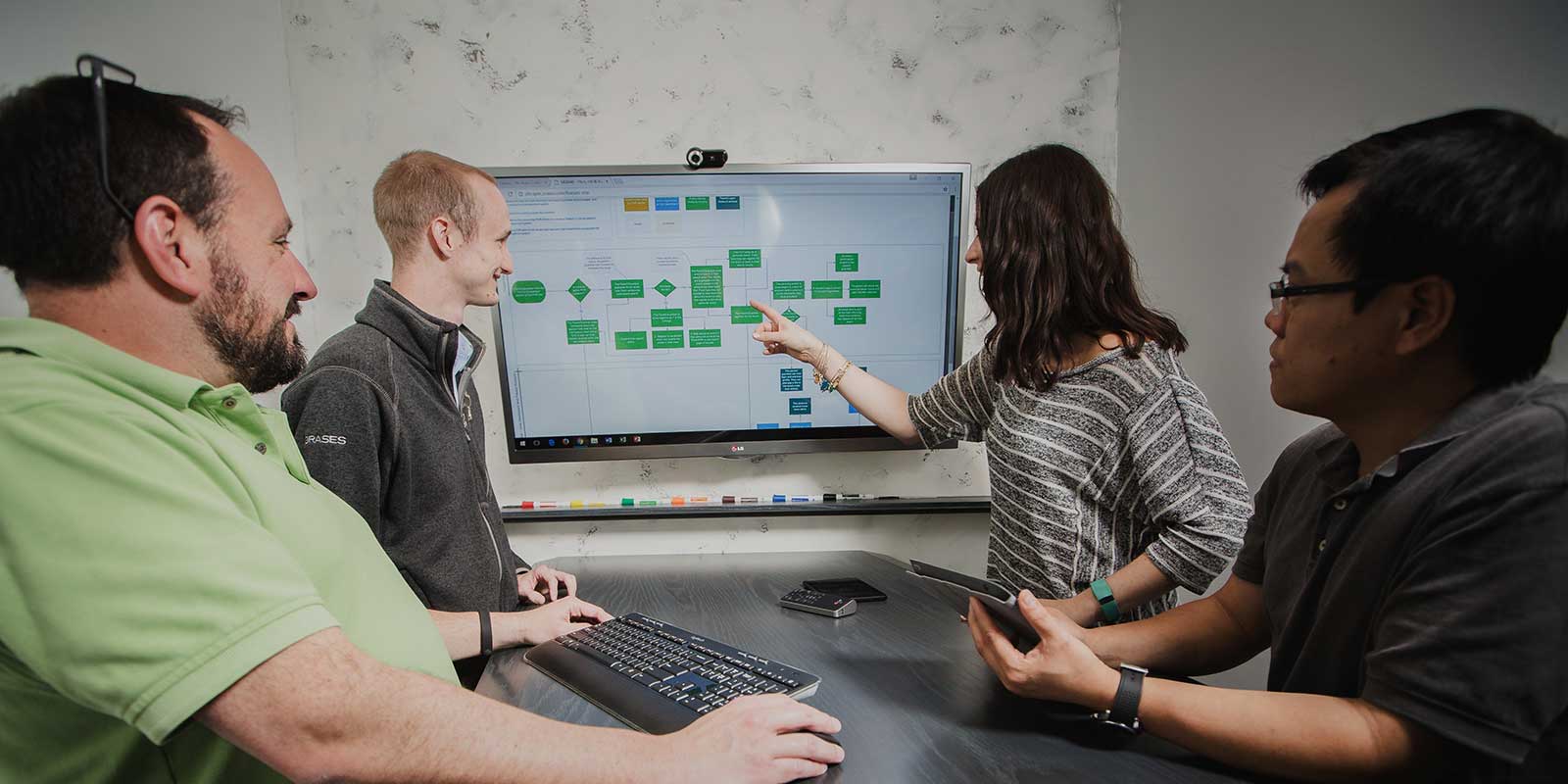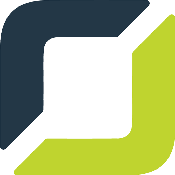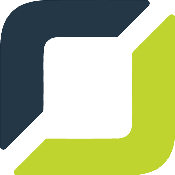Legacy applications often limit efficiency and growth, making modernization an essential step for companies to remain competitive. According to McKinsey, 70% of large-scale IT projects fail to meet their objectives, largely due to misaligned strategies. For organizations investing in multi-year, high-cost modernization initiatives, success hinges on careful planning, strategic execution, and a strong focus on ROI.
This guide outlines key principles for app modernization, providing actionable strategies for IT leaders with goals to transform outdated systems into valuable, future-ready tools.
Assess Your Current Application Landscape
Every successful modernization project begins with a detailed evaluation of your current system.
Steps to Take:
- Evaluate Existing Applications: Analyze purpose, dependencies, and workflows. Identify inefficiencies, outdated integrations, and unsupported platforms.
- Prioritize Key Components: Not all parts of an application need immediate modernization. Focus on areas critical to business operations, like revenue-impacting processes or data-intensive workflows.
A clear understanding of your existing systems helps focus modernization efforts where they’ll have the most impact.
Choose the Right Modernization Approach
The strategy you select will determine how well your newly upgraded application aligns with business goals. Modern systems can improve operational efficiency, but the right approach depends on your needs and constraints.
Modernization Options:
- Rehosting (Lift and Shift): Migrate applications to updated infrastructure without altering code. This provides a quick path to improved performance but retains legacy issues.
- Refactoring and Re-Architecting: Redesign the application to improve its scalability, flexibility, and overall performance. Ideal for systems requiring greater longevity and adaptability.
- Rebuilding or Replacing: Develop a new system from scratch or replace existing software. Suited for highly outdated systems, though resource-intensive.
Align the approach with your business objectives, balancing immediate improvements with long-term scalability.
Decide Between Incremental and Full-Scale Modernization
Your chosen execution model impacts operational risk, the speed of results, and cost predictability.
Incremental Modernization:
- Benefits: Minimizes disruption by updating the system in phases, allowing continuous operation.
- Challenges: Extends project timelines and adds complexity to managing coexisting legacy and modern components.
Full-Scale Modernization:
- Benefits: Delivers a fully modernized system sooner, eliminating inefficiencies in one comprehensive update.
- Challenges: Requires significant upfront investment and careful execution to avoid operational downtime.
Use incremental updates for low-risk contexts and full-scale modernization when addressing critical business challenges.

Cleanse, Standardize, and Migrate Data
Data irregularities can undermine modernization efforts, making data management a critical focus.
Best Practices:
- Cleansing and Standardization: Resolve inconsistencies and ensure compatibility with modern frameworks.
- Data Migration: Use structured migration processes with tools to ensure accuracy and minimize disruptions during transfers.
Accurate, consistent data is the foundation of reliable workflows and decision-making.
Evaluate Your IT Architecture
The architecture of your modernized application must support current operations and future demands.
Recommendations:
- Microservices and Modularity: Replace monolithic systems with modular designs that improve agility and scalability.
- Cloud Readiness: Adopt architectures optimized for cloud environments to enable seamless scaling and improved cost-efficiency.
- Secure By Design: Incorporate compliance and security protocols into the architecture to safeguard sensitive data.
A well-designed architecture ensures systems remain efficient and adaptable as business needs evolve.
Build a Scalable, Adaptable Application
Modern systems should not only meet today’s needs but also adapt easily to future growth.
How to Achieve Scalability:
- Cloud and Containerization: Use platforms like Kubernetes and Docker to simplify deployments and improve portability.
- Autoscaling Features: Implement load balancers and dynamic scaling to handle fluctuations in demand.
- API Interoperability: Ensure applications integrate with third-party tools and other systems through API-driven communication.
Scalability ensures your investments remain relevant and continue delivering value as needs grow.
Align Legacy Upgrades with Future Business Value
Modernizing your applications is more than a technical upgrade, it’s a strategic investment in your organization’s growth. By starting with a clear understanding of your systems, aligning strategies with long-term goals, and embedding scalability and security into your architecture, modernization can deliver measurable ROI while future-proofing your business.
At Orases, we provide end-to-end support for organizations undergoing the modernization process. Whether you’re refactoring existing software or rebuilding from the ground up, our team ensures your investment drives sustainable results and positions you for continued success. Contact us to begin transforming your legacy systems today.






